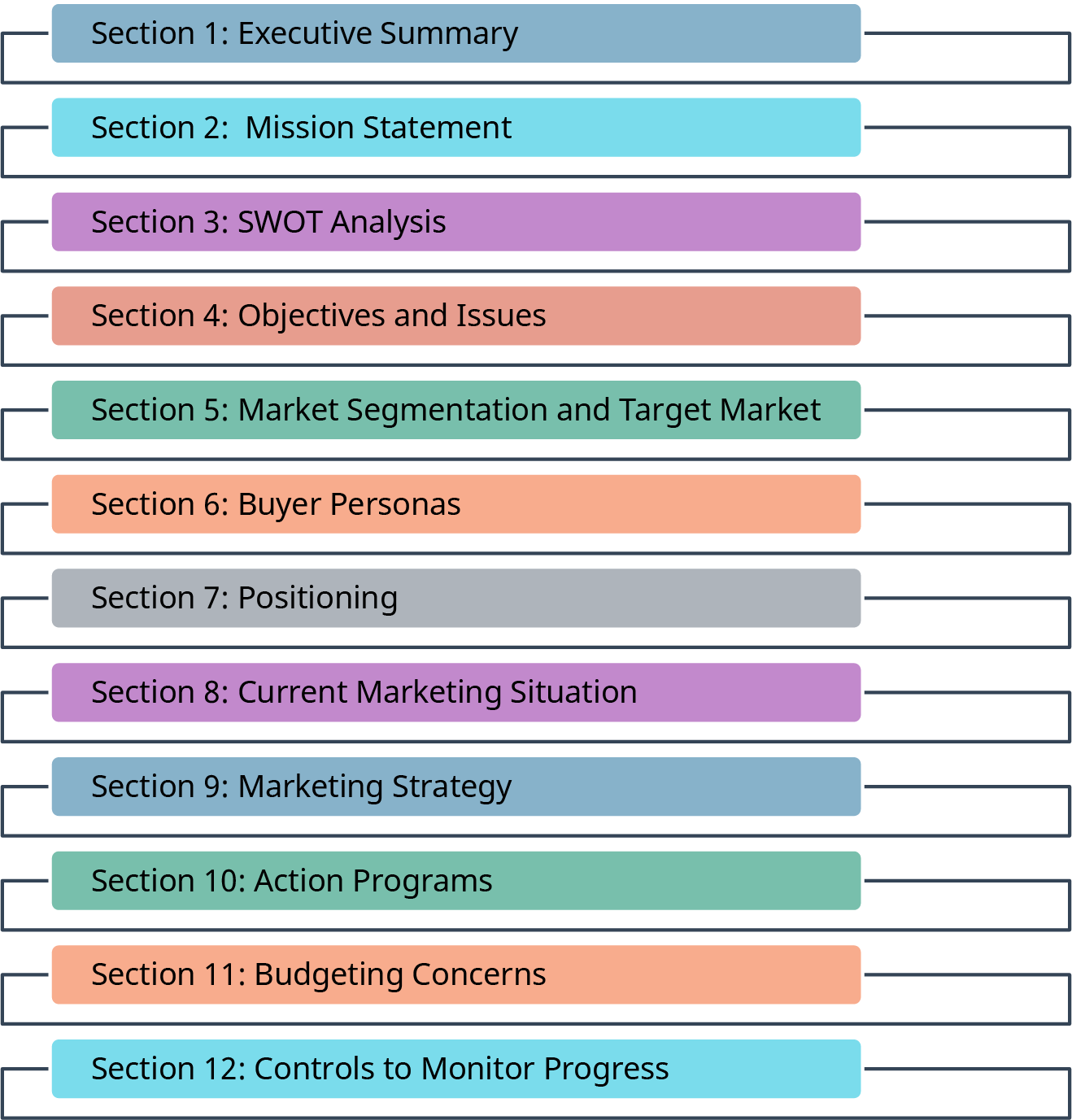Purpose and Structure of the Marketing Plan
Learning Objectives
By the end of this section, you will be able to:
- Explain the purpose of a marketing plan
Purpose and Structure of a Marketing Plan
A company’s marketing plan (Figure 2.10) is without a doubt one of the most important planning tools in business. You might think that it’s an activity that generates an impressive, colorful document that sits in a desk drawer until the next time it gets revised, but you’d be wrong.
If you’re a new business seeking funding, the bank will want to see and understand your marketing plan before parting with funds. If you have an existing business that you want to grow, investors will likely go over your marketing plan with a fine-tooth comb to understand how additional funding will generate a positive return. Even if you’re not seeking external funding, you still need a marketing plan to help you establish and achieve your sales and marketing goals in the most effective manner. That’s because the marketing plan will set forth the specific actions that marketing team members need to take in order to reach target customers, build brand awareness, and of course, generate increased revenue.
If you like sports analogies, think about marketing plans as being akin to playbooks in football. A football playbook sets forth what needs to be done to win the game. The playbook breaks the team’s strategy into actionable plays and defines who is responsible for what in order to win the game. That’s exactly the purpose of a marketing plan as well!
Figure 2.10 A marketing plan breaks a company’s strategies into implementation steps and assigns responsibilities. (credit: “Marketing Plan Presentation Chalkboard Slide” by PLEXKITS/flickr, Public Domain)
Structure of a Marketing Plan
Do a quick Internet search on “structure of a marketing plan,” and you’ll get countless results. To make this even more confusing, there is little agreement within marketing about the precise structure of a marketing plan. Some marketing “experts” argue for 10 components, others for 5 or 6 components. For our purposes in this book, we’re going to use a 12-element marketing plan comprising the elements shown in Figure 2.11, each of which will be discussed in detail.
Figure 2.11 Elements of a Marketing Plan (attribution: Copyright Rice University, OpenStax, under CC BY 4.0 license)



